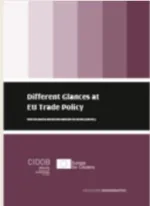Using the TTIP momentum to modernise the EU approach to the global investment policy regime

If there is one single issue in the international trade environment on which all relevant actors agree it is that the existing global investment policy regime is obsolete and in urgent need of revision and reform. In recent years, the United Nations Conference on Trade and Development (UNCTAD) has probably been the most active international institution in promoting and leading this discussion and reflection. Since 2010 this issue has been a central piece of UNCTAD’s World Investment Report series and the arguments and evidence provided there are massive. UNCTAD clearly explained its general view of this issue in 2015 with these words.
Sixty years of International Investment Agreements (IIA) rule making reveal a number of lessons on how IIAs work in practice and what can be learned for future IIA rule making. The expected key function of IIAs is to contribute to predictability, stability and transparency in investment relations, and to help to move investment disputes from the realm of State-to-State diplomatic action into the realm of lawbased dispute settlement and adjudication. IIAs can help improve countries’ regulatory and institutional frameworks […]; can reduce risks for foreign investors […] and become part of broader economic integration agendas, which, if managed properly, can help achieve sustainable development objectives. At the same time, experience has shown that IIAs “bite” (i.e. their protection provisions can and have been enforced by arbitral tribunals at sometimes huge costs to the State), and that they limit the regulatory space of the contracting parties. As a result, concerns have been raised that these limits on regulatory space go too far, were not properly understood at the point of entry into IIAs or are inadequately balanced by safeguards for governments or by obligations on multinational enterprises.